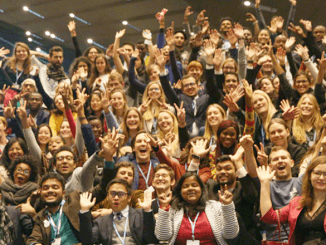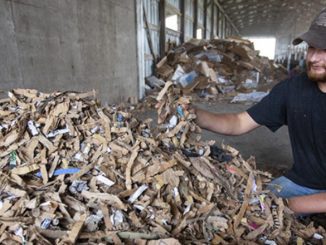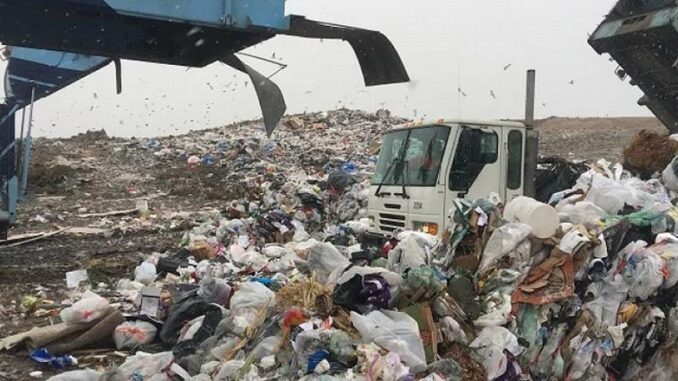
LONDON, England, May 17, 2025, (ENS) – May 2025 has become the month for advancing a global circular economy with events and conferences. The Festival of Circular Economy 2025 opens next week online and in London for three days of talks, events and networking to inspire more recycling and reuse of the industrial and demolition waste materials that often end up in landfills.
From May 20 to May 22, 2025 the festival, operated by the British Circular Economy Institute, will hear from thought leaders on the future of the design landscape, current business challenges, and practical use cases of circular economy models in operation. Click here to find out more.
The first two days of the festival are online, while Day 3 will take place in person at Second Home Spitalfields, a London workspace and cultural venue supporting entrepreneurship, innovation, and community.
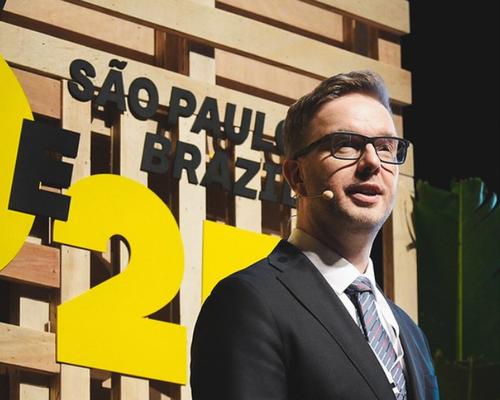
At a different set of events in São Paulo, Brazil, from May 13 to 16, the World Circular Economy Forum 2025, WCEF, welcomed more than 10,000 circularity frontrunners who focused on how the circular economy can help achieve climate targets while delivering new jobs and business opportunities – a message embraced by participants in business, the public sector, academia and civil society.
“To make the change from the current linear economy to a circular one, we need smart regulation,” declared Kristo Lehtonen, director of the Finnish Innovation Fund Sitra, the initiator of the World Circular Economy Forum.
“Linear systems are losing their license to operate,” Lehtonen said, pointing out that an inevitable change is needed to tackle the triple planetary crisis by addressing the root cause – overconsumption of virgin raw materials.
Brazil Takes the Lead
This year’s edition of the forum reflected Brazil’s role in driving change to solve the triple planetary crisis of pollution, declining biodiversity and climate change.
The World Circular Economy Forum was designed to precede the annual United Nations Climate Conference, the 30th conference of the Parties, COP30, which will take place in the Amazonian town of Belem, Brazil, in November.
“The circular economy is certainly one of the instruments we need to make sure that we fight climate change as quickly as possible, in line with what science tells us. We have a few years – very few years – to do the right thing. We need the circular economy,” COP30 President André Corrêa do Lago declared at the forum.
As a host country of WCEF2025 and COP30, Brazil is paving the way to a circular global economy. The country published its National Circular Economy Plan ahead of the forum. The plan prioritizes business models that eliminate waste and pollution, keep products and materials in use, and regenerate natural systems.
“The plan is the result of a collective effort that recognizes the strategic role of industry in the transition to a more sustainable economic model,” Davi Bomtempo, Environment and Sustainability Superintendent of the Brazilian National Confederation of Industry, a co-host of WCEF2025.
Circularity in Decline: New Report
Despite all this interest in circularity, the vast majority of materials entering the economy are still virgin, and the global circularity rate has continued to fall, finds the Circularity Gap Report 2025 launched at the World Circular Economy Forum in Brazil.
Global consumption of material is outpacing population growth and generating more waste than recycling systems can handle, finds the report released Tuesday by the Netherlands-based Circle Economy Foundation in collaboration with Deloitte Global, headquartered in London.
The Circularity Gap Report 2025 finds that transitioning to a circular economy and away from garbage disposal in landfills and can help cut material use, reduce emissions, and protect biodiversity, while increasing business resilience and unlocking new growth opportunities.
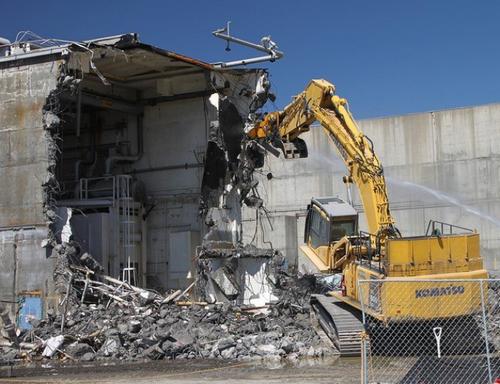
Nearly 90 percent of the materials we humans use end up as waste or emissions and are not or cannot be cycled back into the economy, according to the report from Circle Economy, a global impact cooperative founded in 2011 and headquartered in Amsterdam, Netherlands. It is the foundation’s goal to “double global circularity by 2032 to avoid climate breakdown.”
The new Circularity Gap Report underscores the need for global circular economy targets, system-level transformation, and multilateral collaboration.
The report introduces 11 circularity indicators to help businesses and policy makers reshape policies, redesign systems, and accelerate circular solutions.
Today, just under seven percent percent of the 106 billion metric tonnes of materials used each year by the global economy come from recycled sources – a 2.2 percentage point drop since 2015.
For the first time, Circularity Gap Report 2025 analyzes how materials flowing into, accumulating, and flowing out of the global economy are contributing to, or hindering a circular economy.
The report offers a comprehensive assessment of the current state of affairs and an initial set of proposed targets to help reduce material consumption and increase global circularity.
The analysis helps pinpoint how various levers, such as agricultural sustainability and infrastructure development, can be worked to boost circularity, highlighting “a vast wellspring of untapped potential,” the Circle Economy Foundation says.
Dashboard Makes Sense of Millions of Data Points
As the foundation released this year’s report, Circle Economy also launched the CGR Dashboard – a database unlocking the millions of data points collected since the annual report’s inception in January 2018.
While the use of recycled materials increased by 200 million tonnes from 2018 to 2021, overall material consumption rose much faster, offsetting these improvements.
This year’s report calls for reducing waste in three distinct ways:
- – reducing reliance on virgin materials by prioritizing recycled content,
- – enhancing resource efficiency throughout operations and value chains, and
- – designing products for longevity through durability, repairability, and modularity.
If we were to recycle all recyclable materials, without reducing consumption, global circularity could rise from 6.9 percent to 25 percent, the report advises.
Even so, doing this is unlikely, as some materials remain too difficult or costly to recycle.
So, the 2025 report calls for measures that reduce overall material consumption along with boosting recycling efforts, even though the current recycling system is not only inadequate in addressing the global waste crisis but also inefficient, the foundation recognizes.
“This represents an opportunity for business leaders across sectors to improve recycling systems and minimize waste generation through circular design principles, invest in infrastructure and technologies to improve waste collection, and explore high-value applications for waste,” Circle Economy suggests.
Household recyclables are but a small fraction of the waste stream. Most recycled materials come from industrial and demolition waste, while household waste plays a minor role. Just 3.8 percent of all recycled materials originates from everyday items that individual consumers use and discard.
Circularity Leaders Speak Out
Ivonne Bojoh, CEO of Circle Economy since 2023, understands the complex work required to remedy this situation. “Our analysis is clear: even in the ideal world, we cannot solve the triple planetary crisis by mere recycling,” she said upon release of this year’s report.

“The much-needed systemic change requires fundamental change. This means unlocking circular potential in stocks like buildings and infrastructure, managing biomass sustainably and stopping sending perfectly renewable materials to landfills,” said Bojoh, who had 28 years of international operations and technical leadership experience in B2B, B2C, startups and professional services organizations in Europe and Asia.
“This change doesn’t happen outside ourselves. We all need to make different choices, be bold, and invest to implement circular solutions across value chains,” she said .
The 2025 Circle Economy report calls for the establishment of global circular economy targets to lower material use and energy demand alongside increasing recycling rates. This can be achieved by promoting circular design principles, optimizing the lifetime of existing products and components, and ensuring that the use of recycled materials becomes the norm for businesses in all industries and regions.
Governments can help shape conditions for circularity through smart policies and multilateral collaboration, Bojoh pointed out. By setting a clear vision and supporting circular initiatives, they can create favorable conditions for circularity.
To be specific, Bojoh says this includes shifting tax burdens from labor to material use, reorienting subsidies from linear activities, and funding circular projects.
David Rakowski, partner, Deloitte UK, appreciates what circularity improvement demands. “Business leaders who look beyond compliance to proactively embrace a circularity mindset can help their organizations unlock new value and market opportunities, reduce costs, and build long-term supply chain resilience.”
No one sector can make this change alone, Rakowski explained. He called for ”Strong regional and international collaboration across both the private and public sectors,” and said this collaboration will be an important key to successfully tackling resource use and reduction.
Rakowski advised, “This year’s CGR offers leaders actionable insights to help them decide where to focus their circular efforts, make meaningful progress toward their sustainability goals, and build a resilient global economy that honors our planet’s limits.”
Featured image: The world’s largest landfill is the Apex Regional Landfill just outside Las Vegas, Nevada. Opened in 1993, the site can hold 50 million metric tonnes of waste and has an expected lifetime of 250 years. undated (Photo courtesy WT SkipHire)

